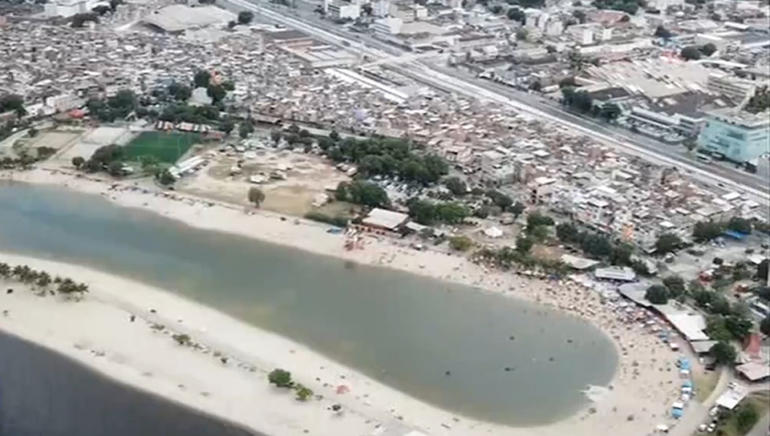When people think about Rio de Janeiro, what comes to mind are its beautiful famous postcard beaches. But hidden away, almost like an oasis among Rio’s slum favelas, is one beach not even most Brazilians know about.
Copacabana and Ipanema are Rio de Janeiro’s most sought-out beaches. But despite being open to the public, not every Rio resident has easy access to them.
For those living in the city’s more distant and less-privileged north zone, there is “Piscinão de Ramos”—the Giant pool of Ramos. It is a man-made park with a natural feel, imported sand, palm trees and salt- water.
CGTN’s Lucrecia Franco reports.
The pool is squeezed between 16 favelas and the highly polluted Guanabara Bay. It is three football pitches in length and holds 30 million liters of treated ocean water.
For residents it is a slice of paradise close to home with only 1.40 meters at its deepest with lifeguards on duty making it safe, even for small children. And with live music and low prices, adults are much more inclined to bring their families and business here than take what can be a two-hour, three-bus trip south to the coast.
“Beer, soft drinks, kid’s snacks cost around half the price than those charged in the city’s famous beaches, so many prefer coming here,” says Naldo Freitas, owner of a kiosk at the “Piscinão”.
“The Piscinão for us who live in the communities is a great place where we can meet our neighbors. It has a family atmosphere and is a relaxing and affordable place to come to,” adds Elaine Luciana, who goes to the pool every weekend.
Built 18 years ago, the Giant Pool’s single-day attendance record is 80,000 people.
Chief water-treatment engineer and President of Rio’s City Hall Water Utility, Claudio Dutra, explains how the highly contaminated bay water is transformed into good quality water for swimming.
All of the water in the pool is replaced every 10 days: “After we sediment the solid dirty particles of the water, which is pumped from the bay, we add chlorine and a product that retains its salinity. The purified water is then injected into the pool at a rate of 100 liters per second.”
Few “Piscinão” beach goers are aware of what it takes to have their own place in the sun, but they all agree it is a privilege having a space, where they can find relief from Rio’s scorching heat and, at the same time, feel at home.
 CGTN America
CGTN America

